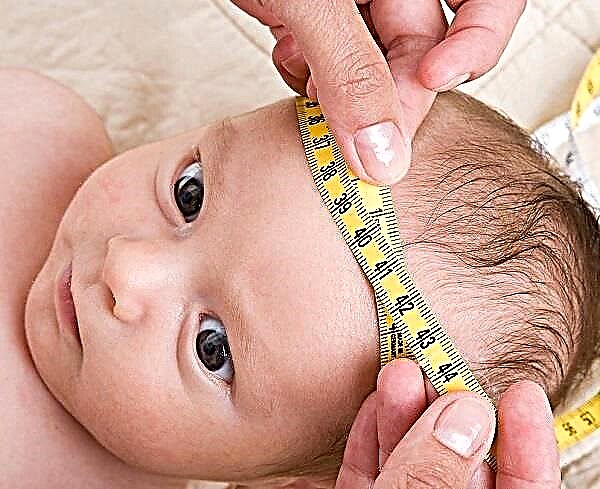Some facts from the history of rubella discovery
Rubella was first described in 1740 by the therapist F. Hoffman. Even 150 years ago rubella was called mild measles. In 1938, Japanese scientists proved the viral nature of the disease. In 1941, fetal abnormalities were described that occur if the mother fell ill with rubella. The causative agent of rubella was discovered only in 1961.
In the modern world, rubella is rare due to vaccination and is relatively easy.
How often do they get rubella?
Only a person gets sick with this viral infection. Men and women are equally susceptible to disease. Rubella occurs most often in children 5 - 14 years old. If in a closed institution, for example, an orphanage, someone gets sick with rubella, then 100% of susceptible people will also get sick. Rubella is highly contagious (highly contagious).
Once upon a time, before the invention of the vaccine, rubella was common. The attenuated virus vaccine was invented over 40 years ago, and the incidence has dropped markedly.
In Russia, mass vaccination began in 2002, due to which the chances of getting sick are currently negligible. According to statistics, in 2016, up to 30 cases of rubella were recorded. Mostly unvaccinated adolescents aged 14 - 17 were ill. All cases were registered in the Moscow, Yaroslavl, Orel, Tyumen regions. No disease was found among children under 14 years of age.
How does rubella virus spread and enter the body?
 From a sick person, the virus enters the environment with exhaled air and droplets of saliva and phlegm during coughing, talking. When viral particles are inhaled, they are fixed on the surfaces of the respiratory tract, then the infectious agents enter the blood.
From a sick person, the virus enters the environment with exhaled air and droplets of saliva and phlegm during coughing, talking. When viral particles are inhaled, they are fixed on the surfaces of the respiratory tract, then the infectious agents enter the blood.
With the blood stream, the virus spreads in the body, penetrates into the lymph nodes and multiplies there. When a high concentration of the virus is reached in the body, the first signs of the disease appear.
During illness, rubella virus is present in secretions from the nose and respiratory tract, blood, feces and urine.
The rubella virus begins to be secreted from the host's body already a week before the first signs of the disease appear and another 7 to 9 days after all symptoms disappear. A person with rubella and no symptoms is also contagious!
The transmission of the disease can also occur from a sick pregnant woman to an unborn child. This pathway is called transplacental.
How does the disease manifest itself?
From the moment a person meets a rubella pathogen until the onset of the disease, it can take from two weeks to a month. During this period, the baby may feel very good, but, nevertheless, it will be infectious to the people around. This period is called the incubation period.
Then comes a slight malaise: the child can be capricious, whiny, refuse to play and eat. During this period, the body temperature rises slightly, usually to subfebrile numbers (about 37.5 degrees Celsius). The kid can not pay attention to the malaise at all - it can be very mild. This period is called prodromal.
Rubella can be asymptomatic in 60% of cases.
Swollen lymph nodes
 At the end of the prodromal period, the child's lymph nodes noticeably increase, their soreness appears, as evidenced by moodiness and anxiety. Older children can point out where it hurts, and then the mother can detect the enlarged lymph nodes herself. They can be the size of a hazelnut or a small walnut.
At the end of the prodromal period, the child's lymph nodes noticeably increase, their soreness appears, as evidenced by moodiness and anxiety. Older children can point out where it hurts, and then the mother can detect the enlarged lymph nodes herself. They can be the size of a hazelnut or a small walnut.
More often the knots are mobile, if you touch them, they will roll between the fingers. They should not be soldered to the skin. The consistency of the knots will resemble a well-swollen gel, that is, they will be elastic. The skin over the lymph nodes does not change, the color remains normal. Most often, the mother will be able to find enlarged nodes in the back of the head, on the sides of the neck, behind the child's ears.
A hallmark of rubella is enlarged lymph nodes in the back of the head, combined with a rash.
The baby may be bothered by pain when swallowing, looking into the mouth, the mother may find slight redness of the mucous membranes and punctate bright red rashes on them.
Rash on the body
 A day after the increase in lymph nodes, rashes appear on the body, which have their own characteristics. At first, the baby's neck and face turn bright red. Small spots and red bumps appear. This rash is called maculopapular. The components of the rash, when viewed from a distance, are indistinguishable, and the child will appear red, hence the name "rubella". On closer inspection, you will notice that the rash is patchy.
A day after the increase in lymph nodes, rashes appear on the body, which have their own characteristics. At first, the baby's neck and face turn bright red. Small spots and red bumps appear. This rash is called maculopapular. The components of the rash, when viewed from a distance, are indistinguishable, and the child will appear red, hence the name "rubella". On closer inspection, you will notice that the rash is patchy.
The rash develops in a matter of hours. When the rash appears on the torso, it may already be subtle on the face. The rash then spreads to the limbs.
On the 2nd day after the appearance of the rash, the child's skin becomes rough to the touch, it becomes covered with small irregularities. Very mild itching is possible.
On the 3rd day of illness, the rash disappears completely. The skin takes on a normal appearance, as before the disease. The skin does not flake off during illness. The enlarged lymph nodes with rubella remain up to 7 days.
Rubella can be without a rash. Then it does not differ from a banal respiratory viral infection.
Rubella is rarely accompanied by inflammation of small joints - polyarthritis. It develops in girls and older women. There are complaints of pain and difficulty in moving the fingers of the hand and the hand itself. There may be swelling of the joints. Polyarthritis lasts up to 2 weeks, very rarely - several months. Passes without a trace.
How is the diagnosis made
The diagnosis of rubella is often clinical. A small rash in a child and unusually large lymph nodes in the back of the head, with relatively good health, speak in favor of rubella. But it is imperative to pass a blood test for a serological study in order to detect antibodies to the virus.
 The serological method of examination consists in the determination of immunoglobulins in the blood - antibodies to the causative agent of rubella. If an illness is suspected, blood is taken from the baby in the first days after the onset, and then after 2 weeks. At the beginning, class M immunoglobulins are determined, at the end of the disease, immunoglobulins G.
The serological method of examination consists in the determination of immunoglobulins in the blood - antibodies to the causative agent of rubella. If an illness is suspected, blood is taken from the baby in the first days after the onset, and then after 2 weeks. At the beginning, class M immunoglobulins are determined, at the end of the disease, immunoglobulins G.
In case of rubella disease in a baby, immunoglobulins of class M will always be determined in the blood in the first days. In the future, antibodies of class G are formed. Their presence indicates an already transferred illness. Therefore, it is so important to donate blood for analysis several times.
Also, for the diagnosis of rubella, it is important to isolate the virus from the secretions of the nose and throat and from sputum. This method is called virological.
If you do a general blood test (from a finger), then there is usually no significant change. There may be a slight decrease in white blood cells - leukocytes, or a decrease in platelets.
Pseudo-rubella in children
Often, a rash similar to rubella occurs in other diseases. Many infectious diseases look like rubella. In these cases, they say that the child is sick with false rubella. But such a diagnosis does not exist.
For example, the so-called roseola, or sudden exanthema, is characterized by a high fever and the appearance of a small rash on the eve of normalization of the temperature, and not in the midst of an illness.
 Rubella is easy to mistake for scarlet fever or measles if rubella is severe. A disease such as infectious mononucleosis also occurs with rashes, but almost all groups of lymph nodes increase. In addition, specific elements appear in the blood - atypical mononuclear cells.
Rubella is easy to mistake for scarlet fever or measles if rubella is severe. A disease such as infectious mononucleosis also occurs with rashes, but almost all groups of lymph nodes increase. In addition, specific elements appear in the blood - atypical mononuclear cells.
Rash infections caused by enteroviruses are characterized by symptoms of respiratory tract damage, as well as vomiting, abdominal pain, and loose stools. The lymph nodes remain of normal size.
An allergic rash is sometimes very similar to rubella, but the presence of unusually large lymph nodes is more likely to indicate rubella.
Rubella treatments
Rubella treatment in children does not have any specific features.
For rubella, the following recommendations are important:
- home regime for an infectious period, abundant warm drink, adequate temperature in the room, with the improvement of the child's condition, you can wash;
- at a high febrile temperature (more than 38 degrees Celsius), the child is given antipyretic drugs (Paracetamol or Ibuprofen);
- with rubella of moderate severity, you can use antiviral drugs (interferon suppositories).
Complications of rubella
Rubella complications are rare in childhood. Arthritis, encephalitis, thrombocytopenic purpura are possible in 1 - 2 weeks after the illness.
A formidable but rare complication is progressive rubella encephalitis... It is an incurable, gradually developing infection of the brain and spinal cord. This complication is caused by the fact that the virus "lives" in the cells of the brain. For the first time encephalitis was described in 1974. Since then, 20 patients have been registered, all males.
Congenital rubella syndrome
The most significant complication of infection is congenital rubella syndrome. It will manifest itself in 90% of newborns if their mothers suffered rubella before 11 weeks of pregnancy and only in 10 - 20% if the mother is infected at the end of the 1st trimester.
With this syndrome, a newborn baby does not have a single organ that would not be infected with a virus. The most common complication is the delayed development of the fetus in the womb, followed by cataracts. It is often combined with a decrease in the size of the eyes - microphthalmia, myocarditis, congenital heart defects (patent ductus arteriosus, stenosis of the pulmonary artery), skin changes like "blueberry pancakes", sensorineural deafness, meningoencephalitis.
 The rubella virus, which has settled in the baby's body, causes pneumonia, hepatitis, bone density decreases, blood cells - platelets and erythrocytes - are destroyed. In the future, such children will experience delayed motor development and mental retardation.
The rubella virus, which has settled in the baby's body, causes pneumonia, hepatitis, bone density decreases, blood cells - platelets and erythrocytes - are destroyed. In the future, such children will experience delayed motor development and mental retardation.
The diagnosis of congenital rubella is confirmed when immunoglobulin M to the virus is detected in the blood of a newborn child, the virus is isolated from the mucus of the nose, throat and urine. From the latter, the causative agent of rubella can be isolated for more than a year.
If the baby has the full range of manifestations of congenital rubella syndrome, the prognosis is likely to be poor. In the first year of life, neurological disorders will continue to increase. But in infants with incomplete manifestation of the syndrome, the prognosis is much more favorable.
Rubella prevention
The only active and proven prophylactic efficacy is only the rubella vaccination!
The vaccine is made from the rubella virus weakened many times over. After its introduction, antibodies to the virus are produced in 99% of vaccinated people. The vaccine virus can be secreted within 18 - 25 days with nasopharyngeal secretion. Its transmission to others has not been proven.
The first rubella vaccination is given to a baby at the age of 12 months. Revaccination with the aim of developing stronger immunity occurs at 6 years of age. Vaccinations are especially important for girls. They must be immune to the disease before entering childbearing age.
The vaccine is contraindicated in pregnant women, as it contains a live rubella virus, albeit weakened many times. After vaccination, a woman must protect herself from pregnancy for 3 months. However, accidental administration of a vaccine to a pregnant woman is not a reason to interrupt it.
Contraindications for vaccination:
- allergy to vaccine components (anaphylaxis to the antibiotic neomycin);
- diseases in the acute phase or in exacerbation (with chronic diseases);
- decreased immunity (with primary immunodeficiencies, malignant neoplasms, taking high doses of hormonal drugs, with HIV infection);
- recent introduction of immunoglobulin.
After being vaccinated, body temperature may rise, a rash, swollen lymph nodes, and joint pain may appear. Arthritis can develop 10 to 21 days after vaccination.
Before planning pregnancy, a woman must be vaccinated against rubella without fail, or laboratory confirmation of the presence of immunity to this disease.
Contrary to popular belief, rubella is not such a harmless infection. Refusing to vaccinate a girl can jeopardize the health of future generations. The disease can simply not be recognized due to an atypical course and thereby harm another, unborn child. Finally, do not assume rubella is a rare disease. Thanks to refusals to vaccinate the epidemic of this, now infrequent, diseases can return again, and then the consequences will be dire.



